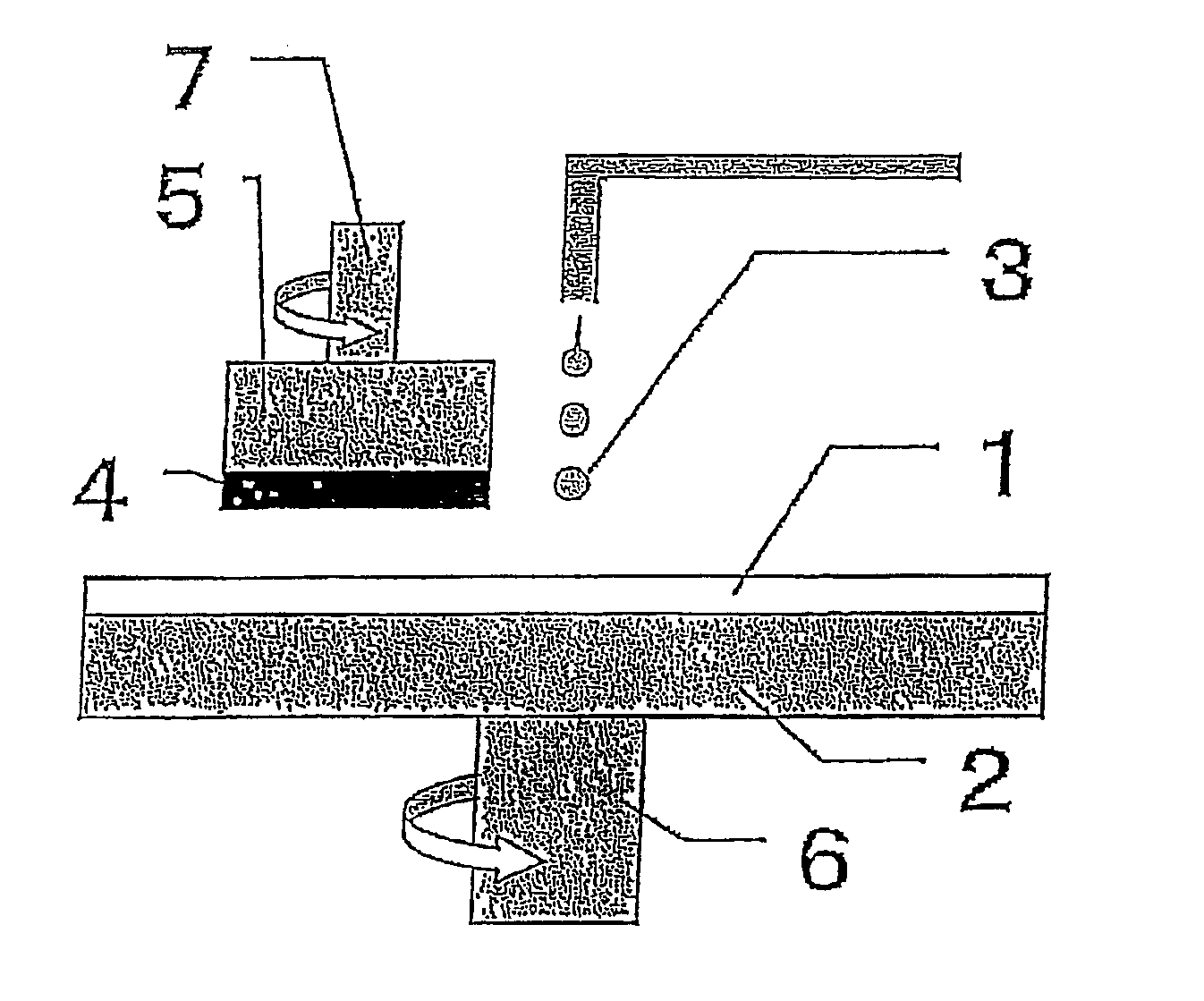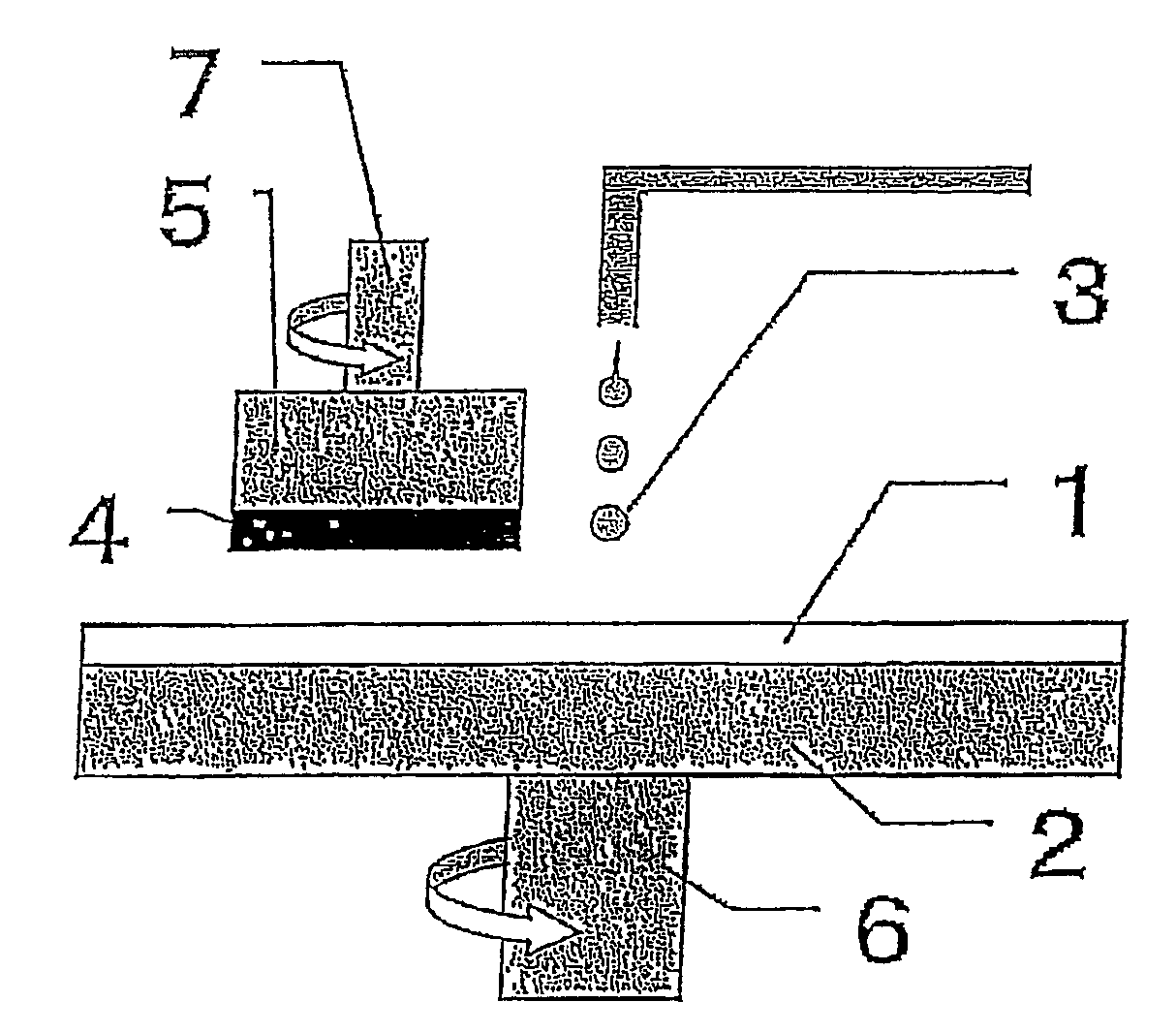Polishing pad and method for producing same
a technology of polishing pad and dummy polishing time, which is applied in the field of polishing pads, can solve the problems of low durability of polishing pads, low stability of polishing rate, and gradual deformation of planarization performance, and achieves high thickness precision, high polishing rate, and shortening of break-in time (dummy polishing time)
- Summary
- Abstract
- Description
- Claims
- Application Information
AI Technical Summary
Benefits of technology
Problems solved by technology
Method used
Image
Examples
example 1
[0107]To a vessel were added 55 parts by weight of polycaprolactone triol (PCL305 manufactured by DAICEL CHEMICAL INDUSTRIES, LTD., 3 in the number of functional groups, 305 mgKOH / g in hydroxyl value), 30 parts by weight of polytetramethylene ether glycol (PTMG 1000 manufactured by Mitsubishi Chemical Corporation, 2 in the number of functional groups, 112 mgKOH / g in hydroxyl value), 13 parts by weight of diethylene glycol (DEG, 2 in the number of functional groups, 1,058 mgKOH / g in hydroxyl value), 2 parts by weight of trimethylolpropane (TMP, 3 in the number of functional groups, 1,255 mgKOH / g in hydroxyl value), 6 parts by weight of a silicone surfactant (B8443 manufactured by Goldschmidt A. G.), and 0.03 parts by weight of a catalyst (Kao No. 25 manufactured by Kao Corporation) and mixed. The reaction system was vigorously stirred for about 4 minutes with a stirring blade at a rotational speed of 900 rpm so that air cells were incorporated into the reaction system. Thereafter, 10...
PUM
| Property | Measurement | Unit |
|---|---|---|
| average cell diameter | aaaaa | aaaaa |
| storage modulus | aaaaa | aaaaa |
| hydroxyl value | aaaaa | aaaaa |
Abstract
Description
Claims
Application Information
 Login to View More
Login to View More - R&D
- Intellectual Property
- Life Sciences
- Materials
- Tech Scout
- Unparalleled Data Quality
- Higher Quality Content
- 60% Fewer Hallucinations
Browse by: Latest US Patents, China's latest patents, Technical Efficacy Thesaurus, Application Domain, Technology Topic, Popular Technical Reports.
© 2025 PatSnap. All rights reserved.Legal|Privacy policy|Modern Slavery Act Transparency Statement|Sitemap|About US| Contact US: help@patsnap.com


